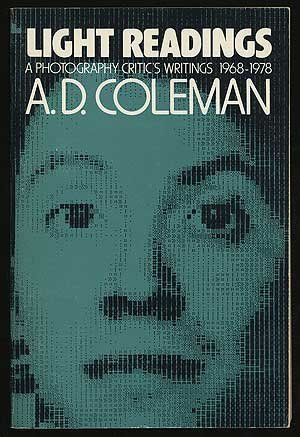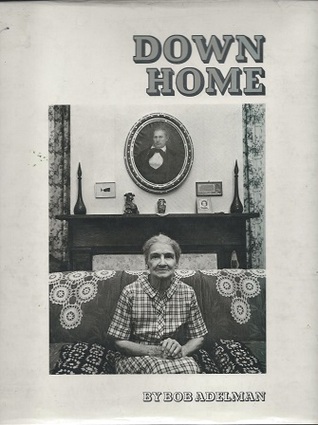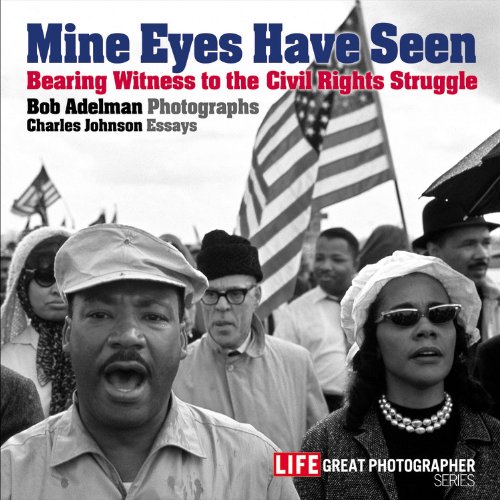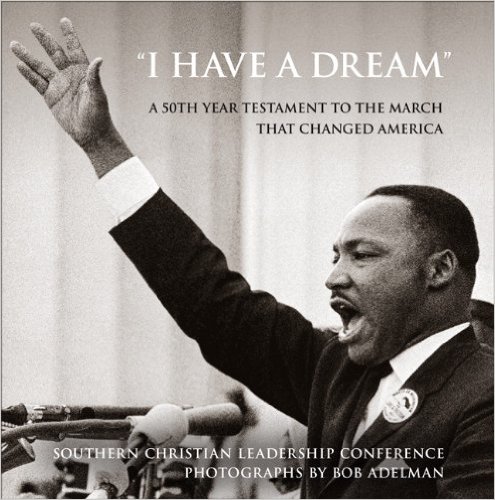 [Photographer Bob Adelman died on Saturday, March 19, 2016, in Miami Beach. According to his New York Times obituary, “[T]he cause of death was hypertensive and atherosclerotic heart disease.”
[Photographer Bob Adelman died on Saturday, March 19, 2016, in Miami Beach. According to his New York Times obituary, “[T]he cause of death was hypertensive and atherosclerotic heart disease.”
I got to know Adelman, a big, affable man, somewhere along the line during my early days as a critic, circa 1970. Like many photographers of the period who worked in the overlapping fields of photojournalism and documentary, Bob thought of his work primarily in relation to the printed page. Due to his sociological bent, and his inclination toward the topical, magazines served as one of his platforms; some of his images of the Civil Rights movement immediately achieved the status of classics.
But the large-circulation periodicals that had supported several generations of photographers addressing sociocultural issues had already entered their decline. The economics of book publishing at that time made possible the production and distribution of relatively inexpensive books that engaged those same issues — a window of opportunity that lasted roughly ten years and subsidized the creation of classics ranging from Larry Clark’s Tulsa to Jill Freedman’s Old News: Resurrection City.
So Bob had begun to conceptualize book-length projects. He came out with a string of them, most issued by mainstream publishers and, from what I could gather, reasonably successful. That led him to becoming a book packager. You can find out more about him at his website.
 I reviewed the first of his books, Down Home, in my December 21, 1972 Village Voice column, one of my last pieces for that newspaper. Subsequently, Bob invited me to his Manhattan studio to talk over a possible collaboration on another book he had in the works. Forty-plus years later, I can’t recall what it was, just that it never came to pass.
I reviewed the first of his books, Down Home, in my December 21, 1972 Village Voice column, one of my last pieces for that newspaper. Subsequently, Bob invited me to his Manhattan studio to talk over a possible collaboration on another book he had in the works. Forty-plus years later, I can’t recall what it was, just that it never came to pass.
In 1979 I published my first book of essays, Light Readings: A Photography Critic’s Writings, 1968-78. I included that Voice review of Down Home in the book, since by then it had become a reference point for me. To accompany my book I curated a small 60-print group show of work by six of the photographers whose work I’d discussed at some length in essay included in that volume: five images from the project I’d written about, and five more from something they’d done since. (The photographers’ choices for both sets.)
Titled “Decade: Bob Adelman, Abigail Heyman, M. Richard Kirstel, Julio Mitchel, Beuford Smith, Jan van Raay,” the exhibition opened at Foto Gallery, NYC in fall 1979, traveled to Focus Gallery, San Francisco, in spring 1980, and had a San Juan, Puerto Rico showing in fall 1980. That was the only time Bob and I worked together in any way, alas. Click here for a 2014 q&a with James Estrin, published in the New York Times “Lensblog” feature. My 1972 book review appears below. — A. D. C.]
•
In Down Home (Prairie House/McGraw-Hill, 1972) Bob Adelman and Susan Hall have created a work which — like Tulsa, The Bikeriders, Palante, Friday Night at the Coliseum — is a most valuable contribution to the growing literature of a genre I am coming to define as the new photojournalism; extended, probing explorations of cultural microcosms.
Like all the above works — partially excepting Tulsa — Down Home is not simply a set of images, but a more complexly structured work involving a lucid combination of words and images to present the texture of present-day life in a small Alabama town. The images are Adelman’s; the text consists of the thoughts and feelings of the subjects, taped and edited brilliantly by Hall — each statement, no matter what its length, seems a perfect summation of identity.
What is made rapidly, abundantly, and horrifyingly clear by this collection of portraits/self-portraits is that the mentality operating in the white power structure of Camden, Alabama, is the same as that which Caldwell and Bourke-White registered in You Have Seen Their Faces, which Marion Palfi dissected in a gripping, unpublished work (“There Is No More Time”), and which has in fact been found and documented by every single photojournalist who has ever worked in the South. To hear, at this late date, the mad litany of happy-go-lucky nigras and trouble stirred up by outside agitators is to achieve immediate empathy with virtually any action taken to escape the torture of domination by such mental ossification.
But the pervasive, endless racism is not always blatant, though it is most never absent — indeed, in one of the few cases where it seems at least to be waning, the speaker has perforce remained anonymous. Every white person, no matter how liberal on the surface, has the seeds of the rot rooting within them, and Hall has chosen these portions of her interviews with an ear for the often almost imperceptible moments when the rot manifests itself. This is not to say that the white subjects of this book are entirely monstrous and insensitive, for they are not. Lev Sheffield makes a not inconsequential point about work and wages when he states, “A man’s worth whatever he can get from his eyes up. That’s where his senses are. From his eyes down, he’s worth 75 cents.” There are other, perceptive comments on a variety of topics, and it is to the credit of Adelman and Hall that what might be termed “the wit and wisdom of Wilcox County” is explored with scrupulous fairness.
Yet the worm of bigotry has apparently riddled the entire white community, and seeing it appearing in one person after another is an increasingly ghastly experience, ultimately resembling some hellish nightmare in which all one’s paranoia is amply justified. It is not, I think, presumptuous to suggest that this book is capable of conveying some modicum of what blacks in this country must experience on a continual basis: an endless process of waiting for the other shoe to drop and the worm to show its head.
If there is a counterbalance to this grimness, it comes from the contrast between a fossilized, decaying white power structure and an increasingly unified, organized, activism-oriented black community. The grotesqueness of Pat Nettles and Hollis Curl — the reappearance of whose picture, in much enlarged size, is positively scary in a cinematic way — is disappearing by attrition. As the Reverend Thomas Threadgill puts it so pithily, “A few funerals, and one or two other elections, and we’re going to have a good county.”
There are any number of fine moments which I could pluck out of this book, but that would be to treat it as a collection of disjunct images with incidental text, rather than as what it is — a visual and verbal matrix of the South today. If you want to sample what Adelman and Hall are capable of achieving, go to a bookstore and look at the photo and text on pages 92 and 93. The text — a Sunday sermon at a Baptist Church — generates a keen understanding of the church as a broadcast center for coded messages to and from freedom fighters (disguised as sermons). In combination with this text, Adelman’s group portrait of the congregation takes on stunning double meanings, since it is also the study of a long and patiently evolved revolutionary cadre. No mean feat for a mere two pages. However, the book deserves your sitting down and reading/looking through it from beginning to end.
•
(First published as “Coded Sermons, Empty Pairs,” Village Voice 17:51 (21 Dec. 1972), pp. 33-34. Reprinted in Coleman, A. D., Light Readings: A Photography Critic’s Writings, 1968-1978 (First ed. New York: Oxford University Press, 1979; second ed. Albuquerque: University of New Mexico Press, 1998), pp. 128-29.
•
This post supported by a donation from 20×24 Studio.
•
 Special offer: If you want me to either continue pursuing a particular subject or give you a break and (for one post) write on a topic — my choice — other than the current main story, make a donation of $50 via the PayPal widget below, indicating your preference in a note accompanying your donation. I’ll credit you as that new post’s sponsor, and link to a website of your choosing. Include a note with your snail-mail address (or email it to me separately) for a free signed copy of my 1995 book Critical Focus!
Special offer: If you want me to either continue pursuing a particular subject or give you a break and (for one post) write on a topic — my choice — other than the current main story, make a donation of $50 via the PayPal widget below, indicating your preference in a note accompanying your donation. I’ll credit you as that new post’s sponsor, and link to a website of your choosing. Include a note with your snail-mail address (or email it to me separately) for a free signed copy of my 1995 book Critical Focus!









Leave a Comment